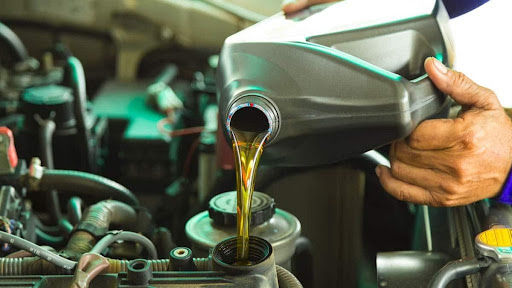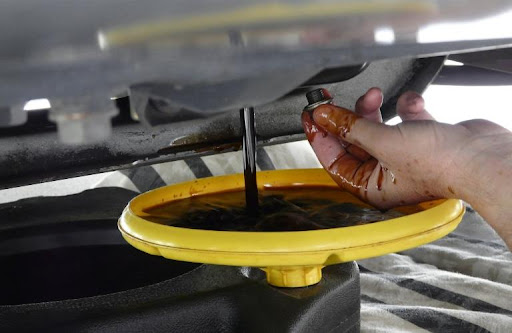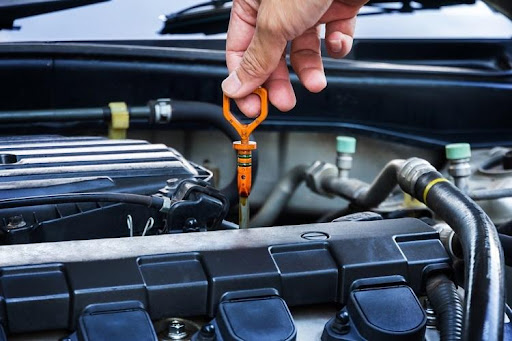Maintaining the proper oil level in your car is essential for its optimal performance and longevity. However, accidents happen, and occasionally, a car may end up with too much oil. While this situation may cause concerns, it is crucial to address the issue promptly and correctly to prevent potential damage to the engine. In this article, we will explore various methods to rectify an overfilled car with too much oil, ensuring that your vehicle remains in top condition.

- Identify the Overfill:
The first step in addressing an overfilled car is to confirm the excessive oil level. Locate the dipstick, usually found near the engine, and carefully remove it. Identifying the overfill in an overfilled car is of utmost importance as it allows for prompt action to be taken, preventing potential damage to the engine. By accurately assessing the oil level and confirming the overfill, steps can be taken to drain the excess oil, replace the oil filter if necessary, and restore the oil level to the recommended range. Failing to identify the overfill could lead to detrimental consequences such as decreased lubrication, inadequate cooling, and potential engine damage.
Furthermore, addressing the overfill helps to maintain optimal performance, fuel efficiency, and preserves the longevity of the engine, ensuring smooth and reliable operation of the vehicle in the long run.
So, are you wondering what you need to do now? All you have to do is to wipe it clean, reinsert it fully, and then withdraw it again. Observe the oil level on the dipstick. If it exceeds the maximum level indicator, your car has too much oil.
- Drain the Excess Oil

The most direct and effective method to address an overfilled car is to drain the excess oil. Begin by gathering the necessary tools, including a drain pan, a wrench or socket set, and a new oil filter (if required). Position the drain pan beneath the oil drain plug and carefully remove the plug using the appropriate tool. Allow the excess oil to drain fully. Once drained, reinstall the drain plug securely.
- Replace the Oil Filter
While draining the excess oil, it is wise to replace the oil filter as well. The overfilled oil may have caused the filter to become saturated, compromising its efficiency. Locate the oil filter, usually near the engine, and carefully remove it. As a result, replacing the oil filter is an important step when addressing an overfilled car with too much oil.
An overfilled situation can cause the oil filter to become saturated and compromised, reducing its effectiveness in filtering contaminants from the oil. By replacing the oil filter, you ensure that clean oil flows through the engine, promoting efficient lubrication and preventing the buildup of harmful particles. A clogged or inefficient oil filter can lead to decreased engine performance, increased wear and tear on engine components, and reduced overall engine life. Therefore, replacing the oil filter alongside draining the excess oil helps to maintain the integrity of the engine, ensuring optimal filtration and protection against potential damage caused by contaminated oil. It is a proactive measure that contributes to the longevity and performance of your vehicle’s engine. So, take note of the type and size of the filter to ensure proper replacement. Install the new filter, following the manufacturer’s instructions, and tighten it securely.
- Check the Oil Level

After draining the excess oil and replacing the filter, it is crucial to recheck the oil level to ensure it is within the recommended range. Follow the manufacturer’s instructions to correctly determine the oil level using the dipstick. If it remains high, additional steps are necessary. Additionally, you can also read more on running your car with too much oil as it will help you to maintain your car.
- Use an Oil Extraction Pump
If the oil level is still high after draining, you may need to employ an oil extraction pump. This device allows you to remove oil directly from the dipstick tube. Connect the pump according to the manufacturer’s instructions, and slowly extract the excess oil until the level is within the acceptable range. Exercise caution to avoid over-extraction, as it may result in insufficient oil levels.
- Seek Professional Assistance

If the above methods fail to rectify the overfilled car, or if you are unsure about performing the procedure yourself, it is best to consult a professional mechanic. They possess the expertise and specialized equipment necessary to address the issue correctly. Explain the situation to the mechanic and provide details about the steps you have taken thus far. They will be able to diagnose the problem and take appropriate action.
- Monitor the Vehicle
Once you have successfully resolved the overfilled oil issue, it is crucial to monitor your vehicle closely for any signs of engine trouble. Monitoring the vehicle after addressing an overfilled car with too much oil is of significant importance.
While the steps taken to rectify the overfill issue are crucial, it is equally vital to observe the vehicle’s performance and detect any potential engine problems that may have arisen. By closely monitoring the vehicle, you can identify any irregular noises, reduced performance, or increased oil consumption, which may indicate underlying issues caused by the overfilled oil. Timely detection of such symptoms allows for prompt intervention by a qualified mechanic, who can diagnose and address the problem before it escalates into more severe engine damage.
Monitoring the vehicle also helps to ensure that the engine continues to operate smoothly and efficiently, providing peace of mind and maintaining the long-term health of your car. Regular vigilance and attention to the vehicle’s behavior can save you from costly repairs and extend the lifespan of your engine. Hence, keep an eye out for irregular noises, reduced performance, or increased oil consumption. If you notice any concerning symptoms, promptly consult a mechanic to assess and address the situation.
Conclusion
While an overfilled car with too much oil can be concerning, it is a manageable issue if addressed promptly and correctly. By following the steps outlined in this article, you can effectively drain the excess oil and restore your vehicle to the appropriate oil level. Remember to take preventative measures to avoid overfilling in the future. In doing so, you will contribute to the longevity and performance of your car’s engine, ensuring many miles of trouble-free driving.